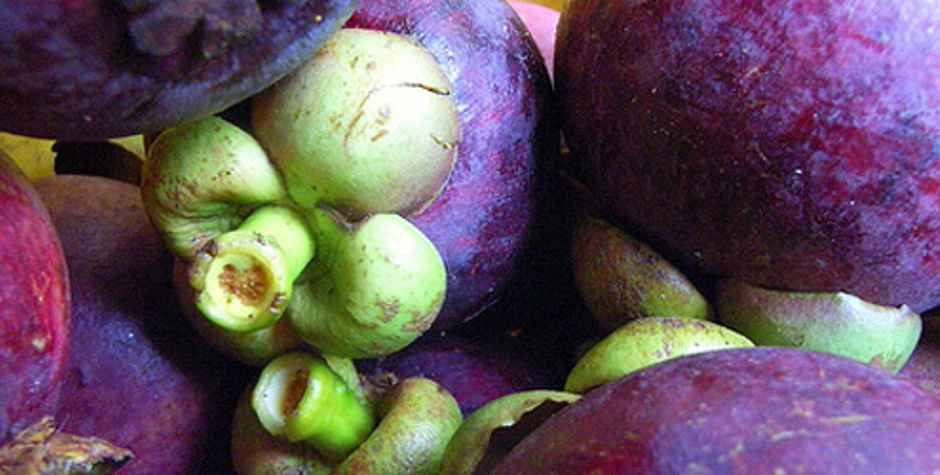The Mangosteen tree is a slow growing tree that reaches between 6 to 20 m in height. It only grows in tropical environments with abundant rainfall and temperature ranges between 5 to 38 degrees Celsius. It takes about 10 years for a mangosteen tree to mature. The ripe mangosteen has a smooth, dark purple rind encasing a white multi-segmented fruit that is refreshing to taste and often consumed for dessert.
Common Name: Mangosteen
Botanical Name: Garcinia mangostana L.
Growing Area: Southeast Asia in areas such as Southern China, Southern India, Cambodia, Indonesia, Malaysia, Thailand, Singapore, Taiwan and Philippines
Nutrients & Applications:
The real power of the mangosteen fruit and its rind, is that it represents the single greatest known supply of very potent and beneficial antioxidants known as xanthones. Research suggests that these xanthones have a number of pharmaceutical properties which include supporting the body’s microbiological balance, maintaining both immune system health and cardiovascular health, promoting joint flexibility and providing positive mental support.
Traditionally, the sliced and dried rind is powdered and used to overcome dysentery, and to promote bladder and urinary tract health. Mangosteen is also used to control pain, fever and ward off infections, and as a natural anti-inflammatory. Made into an ointment it is used to treat eczema and other skin disorders. Mangosteen is thought to have cooling properties, reflecting yin. A root decoction is taken to regulate menstruation.
The mangosteen fruit is highly valued for its flavour, being eaten fresh, in sorbets, salads and desserts. In Malaya the seedless segments are boiled with an equal amount of sugar and a few cloves for 15 to 20 minutes to make a preserve. In the Philippines, a similar preserve is made by simply boiling the segments in brown sugar and the seeds may be included to enrich the flavour.
